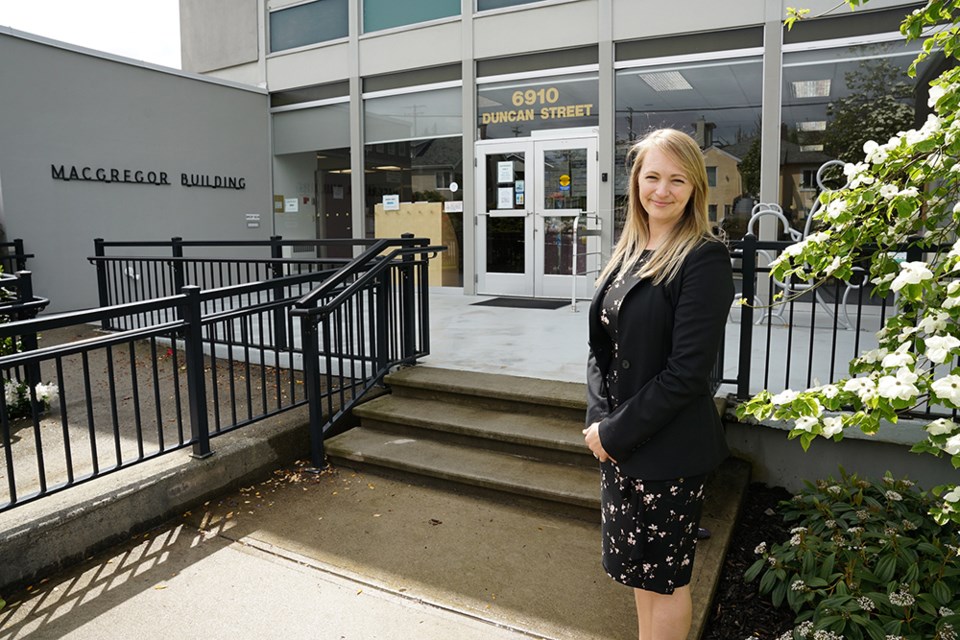City of Powell River staff have been directed to prepare a tax rates bylaw for consideration of first two readings at city council’s regular meeting on April 18.
At the March 19 committee of the whole meeting, chief financial officer Mallory Denniston said she was summarizing a proposed 2024 property tax rates report. The budgeting process, she said, began in August 2023 and since then, there had been 12 meetings where the financial plan was discussed.
“We’ve had a number of robust and productive discussions,” said Denniston. “We’ve also held an in-person public engagement session and conducted an online survey.
“The meeting today is to discuss the property tax rates, which are based on two main assumptions. First, property tax revenue that is established in the City of Powell River 2024 five-year financial plan bylaw that is going for adoption on March 21. It’s based on $24.5 million that is established in that bylaw, which is not yet adopted. Secondly, these rates are based on the 2024 completed assessment roll.”
Denniston said the assessment role was received in January and BC Assessment is undergoing some property assessment appeals and correcting some errors. In April, the city will receive a revised roll and that is the roll property taxes will be based upon, according to Denniston.
Minor changes are expected, and the city is not aware of any significant property assessment appeals that would drastically change the rolls, she added.
Denniston said what the finance department focuses on is the property taxes that taxpayers are paying. She said the largest change was in the major industry class, which is what Catalyst Paper will be paying. She said major industry made up about 16 per cent of the budget last year and it will be 21 per cent this year, with the expiration of the revitalization tax exemption bylaw that provided the mill a tax break.
“With major industry taking more of the property tax burden, we’ve seen a decrease in the property tax burden for residential and business,” said Denniston. “When we look at property tax rates, we have the property tax revenue amount changing, we have non-market changes related to new development, and we have the market changes. Given all those factors, how do we divide up the $24.5 million? The objective is to do it fairly.”
Denniston said when looking at the base scenario, the city landed at a 6.7 per cent increase to the property classes, except utilities and major industry. She said the mill’s property taxes are expected to be about $5.2 million, compared to $3.3 in the prior year, providing a $1.9 million increase in major industry revenue.
The city plans to set aside $1.6 million of that into reserve because there is a big risk with this property that may result in significantly less property taxes in the future, according to Denniston. She said $250,000 of the major industry increase this year will be a relief to the other property taxes.
“I believe we’ve struck a very good balance, saving some for the future to stabilize, but also letting a little bit of relief to the taxpayers,” said Denniston.
Tax notices
Property tax notices will be going out in June. Denniston said for the property tax for an average single-family dwelling, taxes and user fees would be $3,731, which is $235 higher than 2023, for a 6.7 per cent increase. This figure will be 70 per cent of a residential dwelling’s bill, with 30 per cent to pay to other taxation authorities, such as the regional district, school district, and others, according to Denniston.
She said the city would be launching an online property tax calculator, which would allow residents to put in their assessment this year and last year, and be provided a total estimate of what taxes will be.
“At this point we make it clear these are estimates,” said Denniston. “This is an important engagement tool for residents to be able to estimate what their taxes are.”
Councillor Rob Southcott brought up taxation for business in the community.
“I worked in small business in a previous lifetime and I’ve always considered small business to be a cornerstone to our local economy,” said Southcott. “I do deeply value our small business community.”
Southcott said the ratio of taxes paid by small business compared to the residential rate had dropped from 4.2 in 2023 to 3.9 in 2024, but he would like to see that ratio closer to 3.5 times the residential tax.
Denniston said it may be a discussion this year to prepare for the next tax year.
“If we don’t have an appetite to entertain it for this year I certainly do intend to bring it up for next budget cycle,” said Southcott. “I just know our business community is having trouble. I hear about it fairly frequently.”
Councillor Trina Isakson said she would prefer to have a discussion about business tax ratios at the beginning of the 2025 budget planning cycle, which would begin in August. She made a motion to move the tax rate between classes discussion to the assumptions for the 2025 to 2029 five-year financial plan.
The motion carried unanimously.
The committee then unanimously carried a motion that members of the committee direct staff to prepare the city’s 2024 property tax rates bylaw based on the March 19 staff report and adjust for any changes reflected in the 2024 revised assessment roll for consideration of first and second readings at the regular council meeting to be held on April 18.
Join the Peak's email list for the top headlines right in your inbox Monday to Friday.



